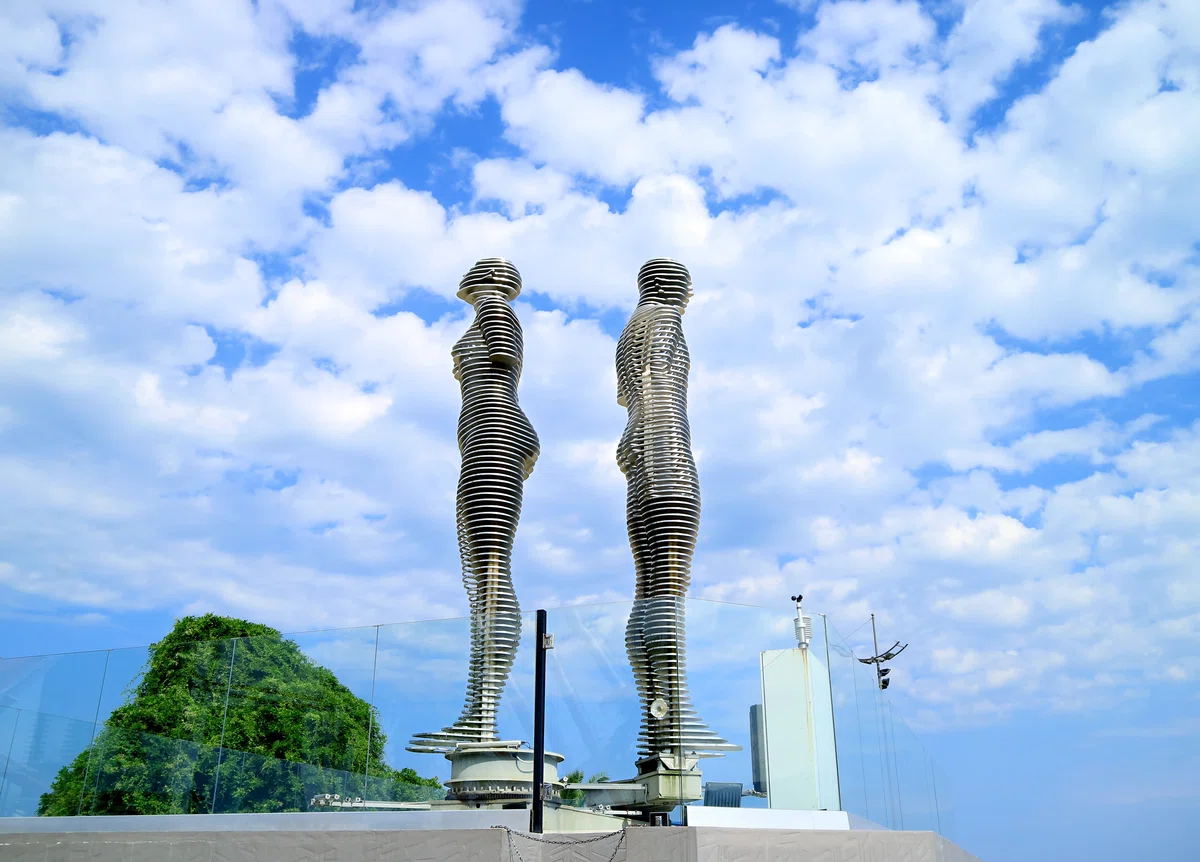
The beautiful love story of Ali and Nino: truth and fiction
Discover the magic of the statue of 'Ali and Nino' in Batumi, Georgia — a unique work of art symbolizing eternal love and unity of cultures. Contemplate how these two majestic metal figures, reaching a height of 8 meters, slowly move towards each other, symbolically unite and pass through each other, embodying the tragic love story between Azerbaijani Muslim Ali and Georgian Christian Nino. Created by talented sculptor Tamara Kvesitadze, this statue is not just a sight, but a powerful reminder of peace and harmony between peoples. Visit Batumi to personally experience this miracle of modern art and engineering, inspiring reflections on love, loss and reconciliation.
Find out the love story of Ali and Nino⬇️
Almost everyone who has been to the resort of Batumi has seen the mobile sculpture group "Ali and Nino" created by sculptor Tamara Kvesitadze on the coastal boulevard.
A man and a woman first move towards each other, and then diverge in different directions. This is a kind of symbol of impossible love.
But few people know that the story of the relationship between a girl from the Georgian princely family of Nino Kipiani and a representative of the ancient Azerbaijani family of Alikhan Shirvanshir is quite real and the sculptural heroes have prototypes. A novel was written about them and a movie was made.
The place of action is the village of Inashauri
A touching legend about love is associated with one of the oldest villages in Georgia — Inashauri, in the Van municipality, the region of Imereti.
Now there is no ancient settlement. But the fact that people lived in these places is evidenced by cultural monuments. Two temples have been preserved, presumably erected in the 5-8 and 13-14 centuries. Not far from the village, on the Dzhidzhour mountain, there are ruins of a fortress built during the reign of Queen Tamar.
According to legend, there were often devastating landslides here. Residents fled, putting their belongings on carts. One day, travelers they met on the road asked where the fugitives were coming from. The villagers replied that they were from places with landslides, or "nashvauri". Hence the name Inashauri.
Famous people in Georgia lived in the village, such as People's Artist Georgy Kharabadze, geologist Kallistrat Gabunia, Elefter and Georgy Khurtsidze, etc.
"Ali and Nino" is a novel by an Azerbaijani writer
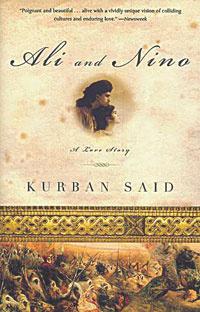
Kurban Said was born in Kiev, but spent his childhood in Baku. His real name is Lev Nussimbaum. He wrote novels and biographies of famous people. He published his works under the pseudonyms Mohammed Essad Bey and Kurban Said.
The plotline of the novel is based on the tragic story of Georgian Nino Kipiani and a representative of the rich Azerbaijani family Alexander Sakandelidze. The events described take place in the Caucasus during the war of 1914-1918 .
Relatives on both sides were against this relationship, but the young people loved each other very much and could not part. Differences in upbringing and religion did not become a hindrance for them.
To make his beloved happy, Alikhan decided to move from his native Azerbaijan to Georgia. Nino was also willing to do a lot for the sake of her beloved.
But the First World War began. Alikhan had to leave Nino and go to defend his homeland. He died in a battle near the city of Ganja. A notebook with notes was found next to the deceased, on the basis of which the novel was written.
In the book, of course, there is fiction. The author slightly changed the fate of the main characters, but he did it superbly.
The book was published in pre-war Vienna, in 1937. Now the novel is popular in many countries, many positive reviews have appeared. The sad story of loving hearts touches to the depths of the soul.
In 2016, director Asif Kapadia made a film based on the novel.
The counter theme of the novel is the conflict of East and West, which is described against the background of the horrific events of the First World War, the Bolshevik Revolution and the collapse of the Republic of Azerbaijan. Throughout the book, the author invariably returns to the problem of East and West, which covers the daily life of the characters.
In the spring of 2007, Azerbaijani director Elvin Mirzoev staged the play “Ali and Nino” at the Actors' House in Baku and became the first performer in the world of the role of the main character Ali. Thanks to the positive reviews of critics and reviews of the audience in Azerbaijan, the play has been further developed and a stunning success on international theater stages.
Today there are more than 30 editions of the novel in various languages of the world. It is known that about 100 publications of the book were published, most of them had the original German or English translation. Similar topics in literature were touched upon by other authors: “Asli and Kerem”, “The Red Veil”, “In 1905".
The real story
Nino grew up in a Georgian noble family. Alexander Sakandelidze is the owner of oil wells in Baku, a very rich man.
They got married in 1916 and settled in Baku. With the advent of Soviet power, Alexander lost all his property. Unlike many, he did not want to emigrate.
The family returns to their native village. They are happy, despite the difficulties and all kinds of harassment by the new authorities. The main thing is that they love and — together.
The couple are buried in the courtyard of the village church, which Alexander built before he lost his capital.










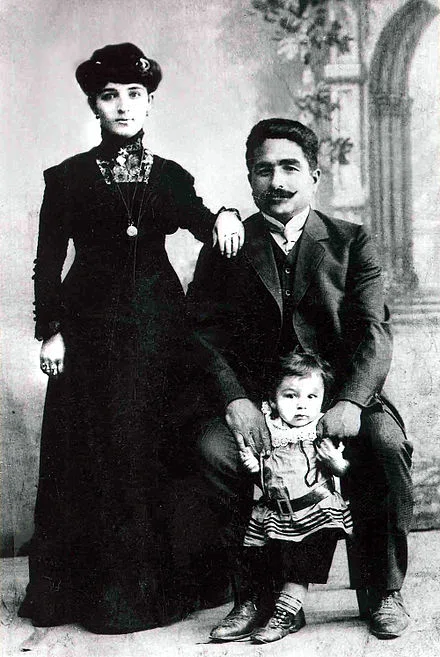
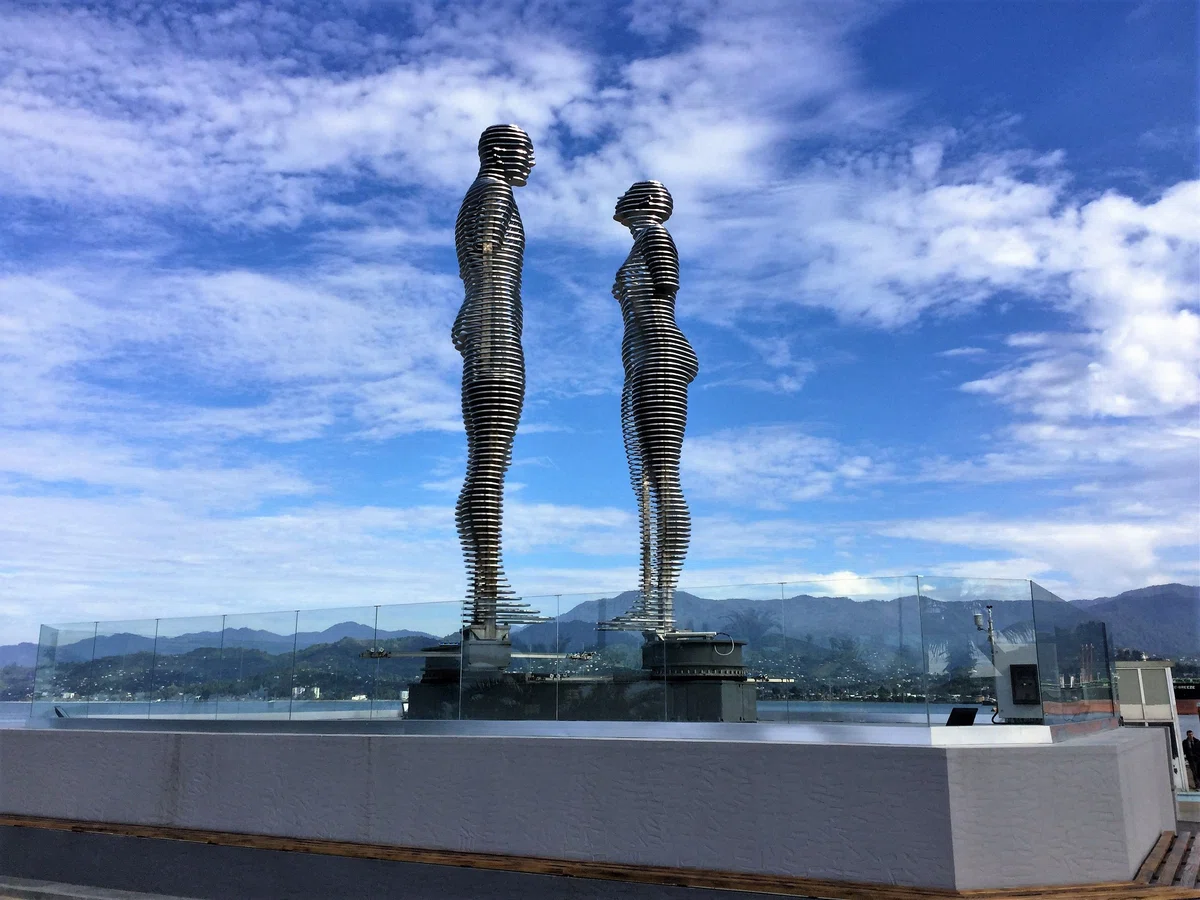

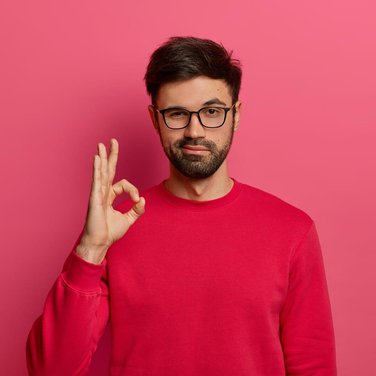
44 comments
Log in to leave a comment
Множество раз попадались фотографии этого архитектурного произведения в интернете, журналах, и только сейчас я узнала, что это не просто интересная задумка инженера, но и персонажи, заимствованные из произведений и даже из вполне реального прошлого!
Красиво, символично и прогрессивно в сфере инженерии.
Реальная история конечно же показывает , что любовь сильнее всего вокруг. Дай бог всем так любить !
Скульптура Тамары Квеситадзе действительно нечто потрясающее. Она олицетворяет любовь, как движение к друг другу, а после сближения присходит как бы угасание чувств и отдаление героев. И так бесконечно по кругу.
У меня возник только один вопрос - почему у скульптур отсутствуют руки?